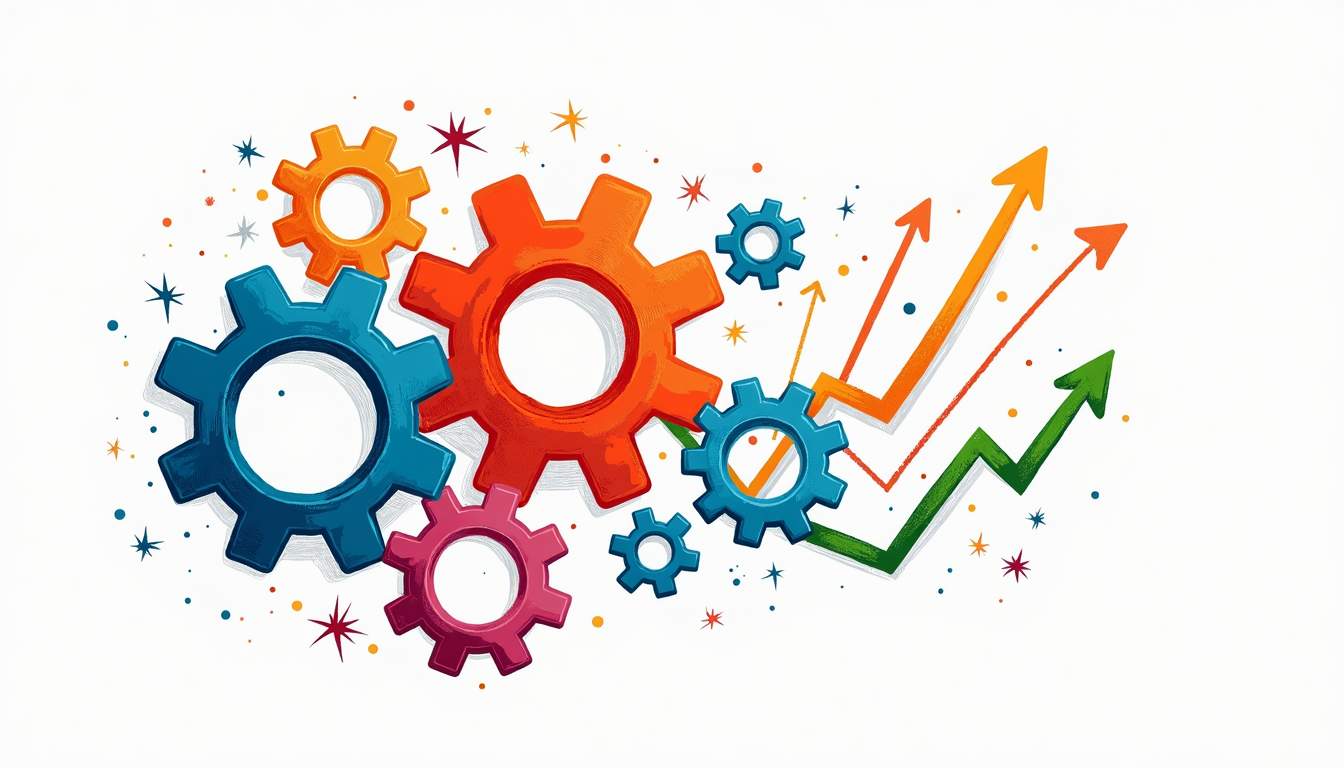In today’s fast-paced business environment, speed and efficiency are not just buzzwords—they’re critical factors that determine a team’s success or failure. Some teams seem to move with lightning speed, consistently hitting deadlines, outperforming competitors, and maintaining high morale. But what exactly makes these teams so efficient? The answer lies in the science of teamwork, communication, and collaboration.
Recent studies reveal that the secret sauce behind high-performing teams is effective communication and strong collaboration. According to ZipDo Education Reports 2025, teams that communicate effectively are 25% more productive, a statistic that underscores how vital clear, consistent communication is to team efficiency. This article explores the key elements that drive such remarkable team performance and offers insights into how organizations can replicate these successes.
The Power of Communication: More Than Just Talking
Communication is often mistaken for merely exchanging information, but in high-performing teams, it goes much deeper. Effective communication fosters understanding, aligns goals, and resolves conflicts before they escalate. When team members communicate well, they share ideas openly, provide timely feedback, and stay aligned on priorities.
Research shows that teams that communicate effectively are 25% more likely to outperform their competitors, illustrating the competitive edge that clear communication provides. This is not just about speed but about quality and clarity that reduce errors and rework, speeding up project timelines. Moreover, companies that communicate effectively are 4.5 times more likely to retain their best employees, highlighting how communication also impacts employee satisfaction and retention (ZipDo Education Reports 2025).
In practical terms, this means that teams benefit from regular check-ins, transparent sharing of information, and accessible communication channels. Tools that facilitate real-time collaboration and feedback loops are essential in maintaining this level of communication, enabling teams to move quickly without losing cohesion. Additionally, the role of non-verbal communication should not be overlooked; body language, facial expressions, and tone of voice all contribute to the message being conveyed. Understanding these nuances can significantly enhance interpersonal relationships within the team, leading to a more harmonious work environment.
Furthermore, the impact of a strong communication culture extends beyond immediate team dynamics. It influences the overall organizational climate, fostering an atmosphere of trust and openness. When employees feel heard and valued, they are more likely to contribute innovative ideas and solutions, driving the organization forward. This culture of communication encourages a feedback-rich environment where learning and growth are prioritized, allowing individuals to develop their skills and advance their careers while simultaneously contributing to the team’s success.
Collaboration: The Engine Behind Meeting Goals on Time
Collaboration is the natural extension of effective communication. It involves working together towards shared objectives, leveraging diverse skills, and supporting one another to overcome challenges. Teams that collaborate efficiently are 25% more likely to reach their project goals on time, a crucial metric in today’s deadline-driven workplaces (ZipDo Education Reports 2025).
Successful collaboration requires trust and a culture that encourages openness and mutual respect. When team members feel valued and understood, they are more willing to contribute their best work and help others. This synergy accelerates problem-solving and innovation, allowing teams to adapt quickly to changing circumstances without losing momentum.
Organizations that foster teamwork also enjoy a 50% lower employee turnover rate, according to insights from Zight. Lower turnover means teams maintain continuity and institutional knowledge, which further boosts efficiency and reduces the downtime associated with onboarding new members.
Moreover, collaboration can lead to enhanced creativity and innovation within teams. When individuals from different backgrounds and areas of expertise come together, they bring unique perspectives that can spark new ideas and solutions. This diversity of thought not only enriches the brainstorming process but also helps in identifying potential pitfalls early on, allowing teams to navigate challenges more effectively. In fact, research shows that diverse teams are often more innovative, producing a higher volume of creative solutions than their more homogenous counterparts.
Additionally, the tools and technologies that facilitate collaboration have evolved significantly. Platforms such as Slack, Microsoft Teams, and Asana have transformed how teams communicate and manage projects, making it easier to share information in real-time and track progress. These tools not only streamline workflows but also create an environment where feedback is instantaneous, fostering a culture of continuous improvement. As remote work becomes increasingly prevalent, the ability to collaborate effectively across distances has never been more critical, ensuring that teams remain connected and aligned, regardless of their physical locations.
Engagement and Productivity: The Profitability Connection
While communication and collaboration set the foundation, employee engagement is the fuel that keeps the engine running at full throttle. Highly engaged teams are more motivated, focused, and committed to delivering results. This engagement translates directly into business outcomes, with companies reporting a 21% increase in profitability when their teams are highly engaged (ZipDo Education Reports 2025).

Engagement is influenced by factors such as meaningful work, recognition, and opportunities for growth. When team members feel their contributions matter, they invest more energy and creativity into their tasks. This heightened productivity not only speeds up project completion but also improves the quality of outcomes, creating a virtuous cycle of success.
Moreover, teams that communicate well are 25% more productive, reinforcing the idea that engagement and communication go hand in hand. Leaders who prioritize transparent communication and foster a collaborative culture naturally cultivate higher engagement levels, which in turn drives efficiency.
Why Some Teams Outperform Others: The Competitive Advantage
In competitive industries, the ability to move fast and efficiently can be the difference between leading the market and falling behind. Teams that communicate effectively and collaborate seamlessly are 25% more likely to outperform their competitors, a significant advantage in any sector (ZipDo Education Reports 2025).
This advantage stems from the ability to make informed decisions quickly, avoid costly misunderstandings, and innovate continuously. Efficient teams are also better at managing resources and adapting strategies based on real-time feedback, which keeps them ahead of slower-moving competitors.
Furthermore, companies that communicate effectively are more successful at retaining top talent, which is critical for maintaining a competitive edge. The best employees drive innovation and excellence, so keeping them engaged and satisfied through strong communication and collaboration is a strategic imperative.
Building Lightning-Fast Teams: Practical Steps for Organizations
Understanding the science behind efficient teams is only half the battle; the real challenge lies in applying these insights. Organizations aiming to build lightning-fast teams should focus on several key areas:
- Invest in Communication Tools: Leverage platforms that enable seamless, real-time communication and information sharing.
- Promote a Collaborative Culture: Encourage teamwork through shared goals, mutual respect, and trust-building activities.
- Enhance Employee Engagement: Recognize contributions, provide growth opportunities, and ensure work is meaningful.
- Train Leaders: Equip managers with skills to foster open communication and resolve conflicts effectively.
- Measure and Adapt: Use data to track productivity, engagement, and retention, adjusting strategies as needed.
By focusing on these areas, companies can create an environment where teams naturally move faster and more efficiently, driving better business outcomes and a more satisfying workplace experience for employees.
Conclusion: The Science of Speed in Teamwork
Efficiency in teams is not a matter of chance but the result of deliberate practices centered on communication, collaboration, and engagement. The evidence is clear: teams that communicate effectively are significantly more productive, more likely to meet deadlines, and better positioned to outperform competitors. Additionally, fostering a collaborative culture reduces turnover and boosts profitability, making it a win-win for both employees and organizations.
Incorporating these principles into daily operations can transform average teams into lightning-fast movers, capable of navigating the complexities of modern business with agility and confidence. For those looking to gain a competitive edge, investing in the science of teamwork is an investment in sustainable success.
Explore more about how effective teamwork can transform your organization by visiting ZipDo Education Reports 2025.




